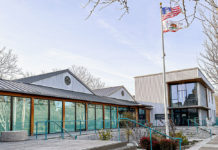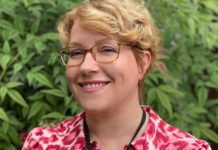Sonoma County Superintendent Steve Herrington announced the county’s guidelines for reopening schools Thursday afternoon, June 11. The announcement came on the heels of the state releasing its own set of education guidelines on June 9.
While Herrington briefly discussed county guidelines for reopening schools, the full guide created by the Sonoma County Office of Education (SCOE) will be released on Friday, June 12. The roadmap for reopening was developed by a school and health planning committee, which was made up of various superintendents — Twin Hills School District’s Barbara Bickford, Petaluma City Schools’ Gary Callahan, Cloverdale Unified School District’s Jeremy Decker, Santa Rosa City Schools’ Diann Kitamura, Guerneville School District’s Dana Pederson, Herrington, Sonoma County Health Officer Dr. Sundari Mase and county counsel Adam Radtke.
The committee met numerous times over the past few months to discuss a plan for reopening, and it consulted with the county’s other school district superintendents.
According to Herrington, the document is designed specifically to help districts reopen once the county enters stage three of its reopening and, like the information released by the state, is a guide rather than a mandate.
While SCOE provides oversight and guidance to local districts, each of the county’s 40 school districts are autonomous when it comes to how they decide to tackle the county and state criteria — for example, someone with kids in both the Gravenstein Union School District and kids in the West Sonoma County High School District may have to follow two different reopening plans. Herrington said that since districts are creating their own individualized plans, some may decide to err on the side of caution while others may not to. Regardless, districts are limited in how much they can reopen, based on what reopening phase the county is in.
Herrington emphasized that while other counties in California may be further into the state’s phase progressions for reopening, based on epidemiology and statistics, Sonoma County is in phase two. Partial reopening of schools is allowed in stage three and full-time reopening of schools is allowed in phase four.
“The things I’m going to share with you are built on the needs of Sonoma County and they’re built on the criteria that works best in Sonoma County. Drawing comparisons between like counties is not necessarily going to give you the same result,” he said.
Fall reopening
Herrington said that while a gradual reopening will probably begin in August, some rural schools may be able to open for all kids five days a week since many are small enough to maintain social distancing between students.
“Schools that are in more urban areas may have to use a hybrid program to focus on bringing back young children to begin with,” he said, adding that the county is urging districts to offer various options to families, including hybrid learning, distance learning and in-person models.
According to Herrington, SCOE surveyed families around the county and 15-22% of parents said that they would choose to keep their children home, should schools have students come back for in-person instruction in the fall.
Regardless, he said that schools won’t look the same. While the county is acknowledging that it won’t be possible for students to maintain a six feet distance from one another all the time, classrooms have to be set up with six feet of separation between students, their peers and teachers. Students over the age of 12 will also be required to wear cloth masks, per the county health order.
However, like everything, related to reopening, decisions about masks will ultimately be up to the districts. “‘Does that mean my child has to wear a mask?’ If my child is under 12, then I would assume that if he’s in the fifth grade he’s most likely 10 — then he does not have to wear a mask. But I could be in a school district that may choose to have a mask required. Remember that — these are guidelines, not mandates,” Herrington said as an example.
As students arrive at school, school sites will be checking their temperatures. When temperature checks are conducted is at the discretion of each district and don’t have to necessarily be done right when they arrive at school.
“Because COVID-19 is in place, we will probably have a case — it could be a student, it could be a teacher, it could be a classified employee working in the office — there’s a protocol on how to handle that case,” Herrington said, noting that a single case may not mean that a school or district will be shut down entirely.
If there are multiple exposures in a classroom, Herrington said that the district will have to work with Sonoma County Public Health to determine if the classroom, school or district should revert back to distance learning.
“We had to deal with a very catastrophic year. We had to deal with the power outages and select schools opening and closing. We had to deal with the mass fire known as the Kincade Fire and the mass evacuation of 200,000 residents in Sonoma County and their displacement, and then we had to reoccupy our schools. Then when we thought we were back on track again, and we got hit by the pandemic, and we are currently in the pandemic and we will probably still be in the pandemic as we start the fall term.”
According to Herrington, since 2017 the 40 school districts, charter schools and independent schools have collectively lost over 1,000 days of instruction.
Going forward, Herrington emphasized that districts need to remain flexible should the county have to backtrack in its phasing — if they reopen for full-time or part-time in-person teaching, there’s still the possibility that individual schools, districts or the entire county may have to go back to distance learning.
47.6
F
Healdsburg
April 21, 2025








